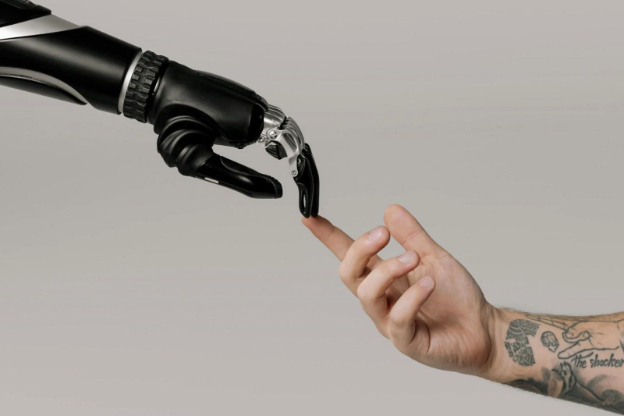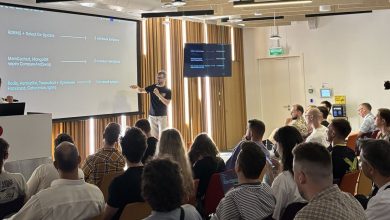
A highlight of the most recent Demon Slayer film is the Infinity Castle. Ever-changing chambers, sky-high towers, and endless hallways define the elusive main hub of the primary antagonists.
But what makes this fortress more intriguing is that its shifts happen with the striking of a chord on a Japanese short-necked lute.
Every hit changes the layout of the castle—and with immortal demons running the place, centuries of striking chords have turned their hub into a field of boundless possibilities that defy the laws of physics.
While the Infinity Castle is a sight to behold, in reality, it can represent the chaos of not adhering to structural integrity and practicality.
Civil engineering has always been a discipline bound by unshakable truths of the laws of physics. A bridge stands or it collapses. A building withstands seismic shock; otherwise, it could fail.
There’s no middle ground. Yet in today’s digital era, engineers are gaining an unlikely ally: artificial intelligence (AI).
AI’s Role in Modern Engineering
Far from replacing physics, AI actually strengthens it—running millions of simulations, catching human oversights, and optimizing structures for both efficiency and safety.
Interestingly, the way AI balances risk and probability is not that different from a round of Pusoy Go, where every decision demands foresight, pattern recognition, and the careful weighing of possible outcomes.
The stakes in construction are much higher, of course, but the principle remains the same: anticipate, calculate, and act wisely.
Predicting Stress and Load
Traditionally, engineers rely on established formulas: Newton’s laws of motion, Euler’s equations, and Hooke’s law of elasticity.
These laws remain the backbone of design, but AI amplifies their application. By feeding structural blueprints into machine learning models, engineers can predict how materials will respond to real-world conditions, such as loads, temperature swings, or seismic shocks.
What once required weeks of calculation can now be simulated in hours. Thousands of potential stress scenarios can be tested virtually, providing engineers a clearer view of vulnerabilities before construction even begins.
The outcome of these stress feeds? Safer, more durable, and more resilient structures.
Optimizing Material Usage
Every ton of concrete or steel carries both financial and environmental costs. Excessive use increases expenses and emissions, while insufficient use risks structural failure.
AI helps strike a balance by analyzing design requirements and environmental factors and recommending precise material quantities of high-quality durability.
For example, AI can suggest beam dimensions that reduce steel use by 10–15% while still meeting safety codes.
This optimization is more sustainable and cost-efficient, practices that are imperative in the construction industry.
Digital Twins and Simulation
One of the most transformative applications of AI in construction is the digital twin, or a virtual replica of a building, bridge, or tunnel.
These twins allow engineers to simulate decades of wear, sudden environmental events, or heavy traffic before ground is broken.
Through AI, digital twins reveal how structures behave under extreme conditions such as earthquakes, hurricanes, or high wind loads.
Engineers can then adjust designs, reinforcing weak points before they become costly or dangerous failures.
Essentially, AI provides foresight—reducing uncertainty in a field where uncertainty can have devastating consequences on human lives.
Physics Still Rules the Game
AI is powerful, but it does not bend the laws of physics. Gravity still pulls, wind still exerts drag, and materials still fatigue under stress.
What AI does is make these calculations faster, more detailed, and less prone to human oversight.
But why is striking a balance between physical laws and AI crucial?
It’s because while AI can suggest bold design optimizations, engineers must ensure these recommendations remain grounded in physics. In this sense, AI acts as an assistant, enhancing human expertise rather than replacing it.
Case Studies: AI in Action
Outlined below are
1. Earthquake-Resistant Skyscrapers in Japan
For centuries, Japan has witnessed and dealt with seismic activity due to its situation on two major tectonic lines within the Pacific Ring of Fire.
AI-enhanced models now simulate hundreds of earthquake scenarios, allowing architects to design shock-absorbing foundations.
These buildings can sway with seismic waves without collapsing, protecting both lives and infrastructure.
2. Bridge Safety in the United States
Thousands of bridges in the United States are at risk of aging and stress due to traffic. AI-powered drones inspect them, scanning for microscopic cracks invisible to the human eye.
By predicting when and where fatigue will spread, AI helps authorities prioritize repairs, preventing potential disasters.
3. Sustainable Construction in Europe
In Europe, where green initiatives are driving policy, AI plays a seminal role in eco-conscious design.
Algorithms calculate the carbon footprint of various materials and layouts, offering sustainable alternatives while ensuring projects are structurally sound.
Human + AI: The Winning Partnership
One of the most common misconceptions about AI—no thanks to fearmongering and misinformation—is that it will fully replace engineers.
While there is some nuanced truth to this claim, the reality is much more collaborative. AI excels at running millions of simulations and detecting patterns, but human judgment remains indispensable.
Engineers bring intuition, ethical responsibility, and creative problem-solving—qualities machines cannot replicate.
Together, human expertise and AI form a partnership that elevates construction to new levels of precision and reliability.
Looking Ahead: Smarter, Safer Cities
As cities expand and populations grow, so too will the demand for resilient and efficient infrastructure.
This positive correlation propels AI to fulfill this demand and provide present and future generations with the benefits of innovative structural methods.
Imagine smart cities where buildings adapt to stress in real time or bridges equipped with sensors that trigger instant alerts when weaknesses are revealed.
These aren’t distant science fiction—they are the logical progression of AI and physics working hand in hand.
By marrying centuries-old scientific principles with advanced computation, we build not just structures but trust in their longevity.
Conclusion: Building Smarter, Stronger, Safer
Artificial intelligence is reshaping engineering and construction, not by rewriting the laws of physics but by reinforcing them.
From optimizing materials to simulating natural disasters, AI ensures that every project is safer, stronger, and more efficient.
The secret lies in foresight, anticipating risks, calculating probabilities, and making the most logical and strategically possible move. In construction, those moves don’t just win games; they save lives and shape skylines.
And in the case of the Infinity Castle? It reflects the endless possibilities of using AI and physics to innovate structure and evolve the world we live in.



